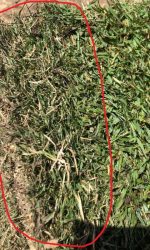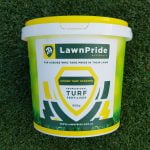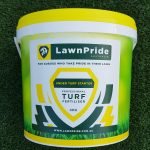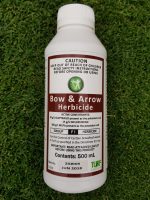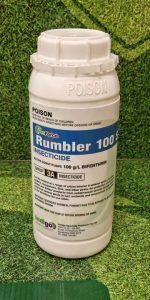Turf Care makes a massive difference
Turf care is extremely important to ensure a quality outcome for your turf. If your a keen DIY home handyman and want to have a go at laying your own turf, follow the steps below on how to do it properly. Conditioning your soil, watering, fertilising and mowing techniques in your regular turf care will also improve your lawn.
Preparation and Laying of turf
Steps to follow when laying your own turf
Step 1- Planning and Measuring
Firstly decide on what type of turf would best suit your area and its conditions. Take measurements of the area so you know how much turf you will need. If your area is a neat rectangle measuring will be easy, just measure the length and width of the area and input your measurements into our turf calculator. This will give you your measurements in square metres. If your area is a bit tricky, break it up into sections and take the measurements of each section and then add the measurements together. Always as a rule of thumb allow 5% extra in turf for wastage and cutting in around flower beds or footpaths.
Step 2 – Prepare your area
Get rid of all existing grass and weeds by spraying Glyphosate or Round Up over the desired area. Wait for a few days, then apply water to germinate the rest of the seeds that may be laying dormant in the soil. If any new weeds pop through re-spay the area again. Remove all building materials, buried stumps, rocks and debris in the area where you are wanting lay new turf. To avoid drainage problems rough grade the area, ensuring the soil gradient slopes away from all building foundations and pathways. If your levels need to be raised, fill with a good quality sandy under soil to the depth of 150mm. Use a rake to evenly spread the under soil. Once completed use a water filled roller to compact the new soil. Water the prepared area to create a moist surface for the turf.
Step 3 – Lay the turf
Your instant lawn from Albert Valley Turf will be delivered in slabs not rolls. It is very important that the turf is laid as soon as it has been delivered. To assist with the establishment of your new lawn, we recommend spreading Under Turf Starter, which is a combination of organic, slow release fertiliser and water crystals just before you start laying the turf. Begin installing turf along the longest straight line such as a driveway or path. Ensure there are no gaps between any pieces of the turf. It’s important not to kneel on the turf or stretch it. Butt the heels of each piece of turf hard against each other. This will avoid air pockets and drying of the turf. To avoid lines lay each piece in a brickwork pattern. Use secateurs to cut turf to fit at each end or to cut in and around garden beds and paths. Rolling the turf with a water filled roller is very important as it improves the root to soil contact and eliminates any air pockets that may have formed. Keep foot traffic off the area for the first 4 weeks.
Step 4 – Water in the new turf
- New turf should be watered, using a sprinkler or irrigation system, as soon as possible after being installed.
- When watering, the new turf should be thoroughly soaked so the turf is wet but also so the dirt below is soaked allowing for the roots to grow into soft dirt.
- The turf should be thoroughly soaked for the first couple of weeks.
- During hot weather, frequent light watering is suggested until when you pull at the turf you can see that the turf has rooted down.
- After the turf is rooted down it can be watered as normal lawn would be watered.
The turf is a living product so it is imperative that water is applied as soon as it has been laid. Give it a good soaking to encourage the roots to settle in and keep the turf wet for the first 2 to 4 weeks. From week 4-6 water less and less to encourage deep rooting.
The best time to water is in the early morning so less water is lost by evaporation. The worst time to water is in the evening because the lawns stay wet at night, which encourages disease and fungus development. Lawns that are watered too frequently tend to develop shallow root systems which make them susceptible to grub damage and heat/drought stress.
Watering and Fertilising for Maximum Results
It is best practice to fertilise turf grass with small amounts regularly, but that can be time-consuming, so the best option is to use a good quality, slow-release fertiliser that feeds your lawn and promotes steady growth. Your new turf requires a great deal of water in the first couple of days and will die if not properly watered. Your lawn is made up of living plants, It needs the proper watering, mowing, fertilisation, and chemical applications (when required) to become a beautifully established lawn. Your lawn will only look as good as you allow it to look, so the proper maintenance is essential to having a beautiful lawn. When new turf is laid it can take up to 9 months for it to properly establish and become drought tolerant, depending on the variety you have chosen.
A lawn fertiliser that, Albert Valley Turf would recommend is GrassMaster organic based, slow release fertiliser. It is high in Nitrogen and trace elements which are perfect for all lawn types and will give you a lush, healthy lawn for years to come.
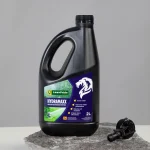
Organic Fertiliser Available during Spring, from the farm
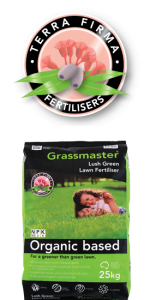
Lawn Mowing Tips
Allow your new turf a few weeks to settle in before its first mow. Make sure your mower blades are nice and sharp at all time to prevent lawn diseases. The height you mow your lawn depends on the health of the turf and the amount of hydration available. If you are in drought conditions or your lawn is suffering, raise the height of the mower. As a rule, you should mow regularly in summer to promote green leaf and suppress weed growth.
Keeping Weeds out of your Lawn
Herbicides are available that will kill the weeds in your lawn. The range is voluminous and covers pre-emergent, post-emergent, selective and non-selective applications. Exercise caution and read instructions, or you may end up killing your lawn. The best defence against weeds is a thick, healthy lawn, but if you do get weeds, here are some quick eradication tips:
- Minimise soil disturbance – sever the roots of single plants, rather than digging them out of the turf
- Remove weeds when they are young, or after a soaking rain.
- Remember; regular turf care will reduce weed infestation
Dealing with Lawn Grub
A lawn grub can eat up to thirty centimetres of lawn every night, so do not ignore. If you want to treat with an insecticide, we can advise on the best one for your turf variety. As a rule, lawn grub treatments should be applied late in the day and watered in if the grass is dry. It is a good idea to treat again in two weeks.
Organic options include mowing grass higher, as beetles and moths prefer to lay their eggs close to the soil, and regularly aerating to encourage deep, strong root systems. The best organic method of lawn grub control is Bacillus Thuringiensis, a bacterial control that is available from garden suppliers.
Pallet Burn
‘Pallet burn’ is a form of severe heat stress that affects turf stacked on a pallet. Most common in warmer months leading up to and throughout summer – pallet burn is caused by exposure to extreme heat or extended periods of time stacked on a pallet. Consequently, the turf is overheated and begins to burn from the centre of the slabs.
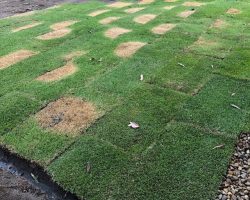
Heat Stress
Just like an already established lawn in the ground, freshly harvested turf is easily effected by heat stress. Leave any freshly harvested lawn out of the ground for too long and the quality can deteriorate very quickly. Install as soon as possible and soak with water to restore and maintain the health of your new lawn. High soil temperatures cause reduced root production, minimal new roots production, faster maturation and die back of the roots. Eventually, the turf thins and become more spindly.
During the hot summer months, there are 3 main issues that MAY have a detrimental effect on the quality of your lawn. They are:
- Heat (during hot summer days)
- High Soil Temperature
- Lawn Grub (especially after rain)
Contact us today for an obligation-free quote on turf supply and delivery in the Gold Coast, Ipswich and Brisbane area.
